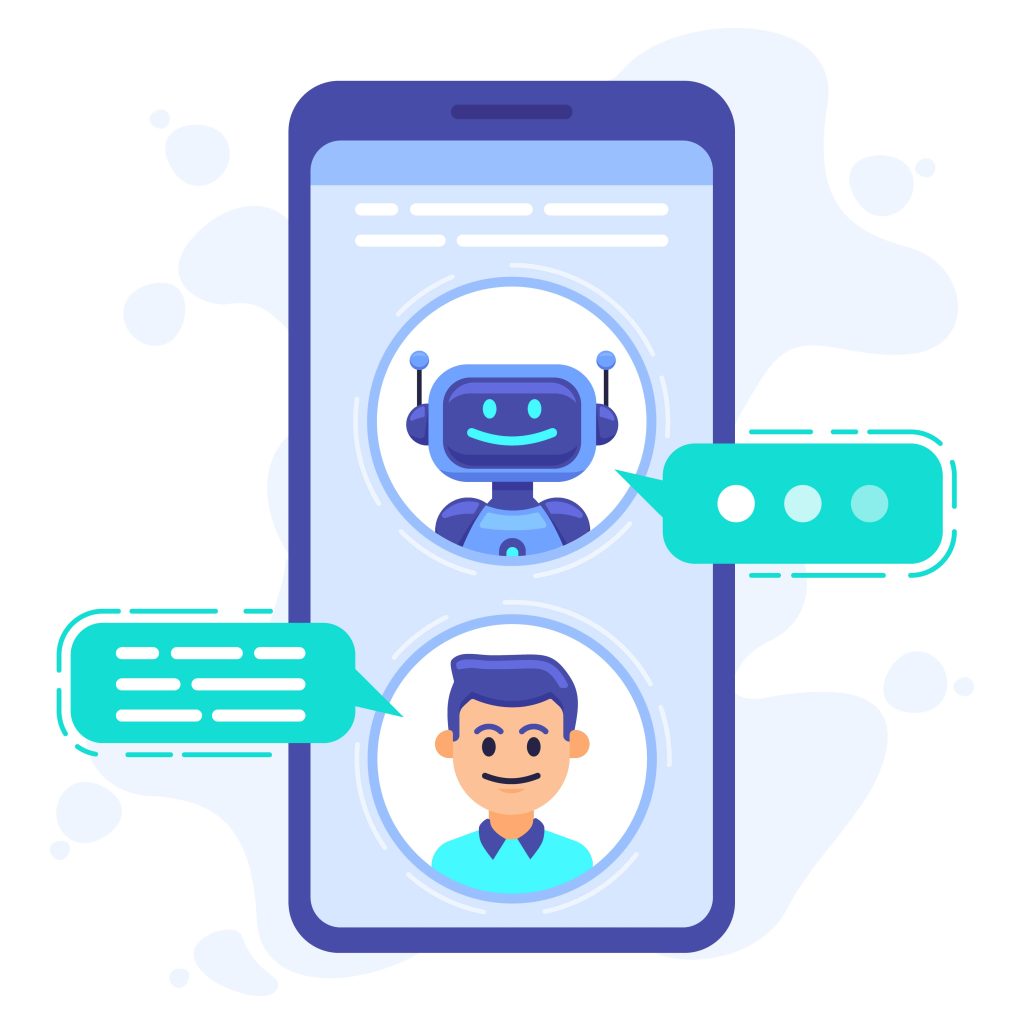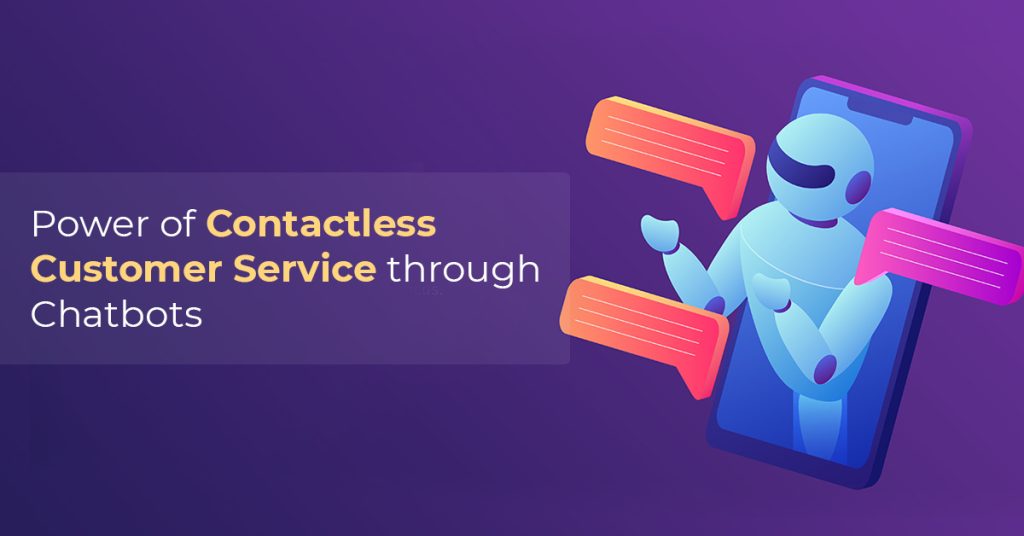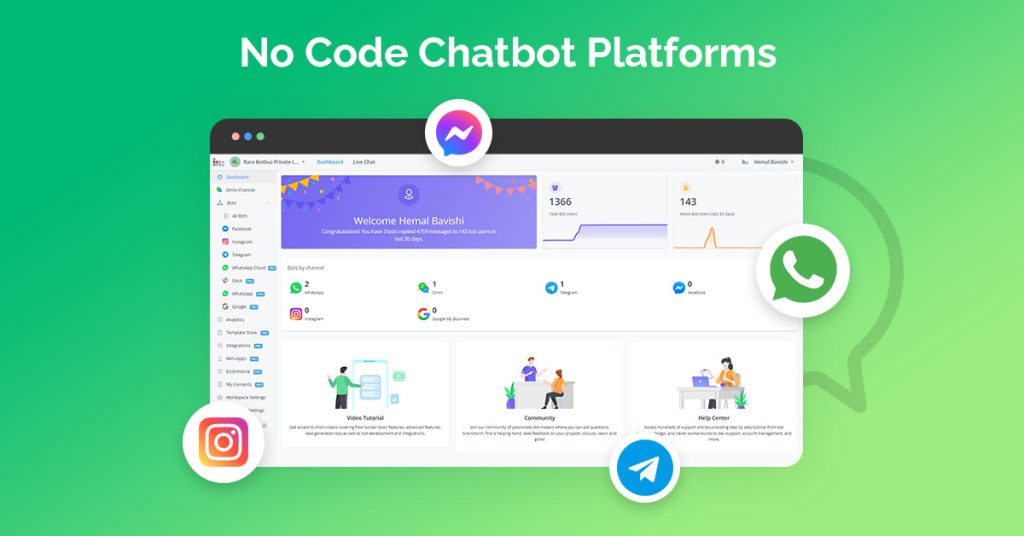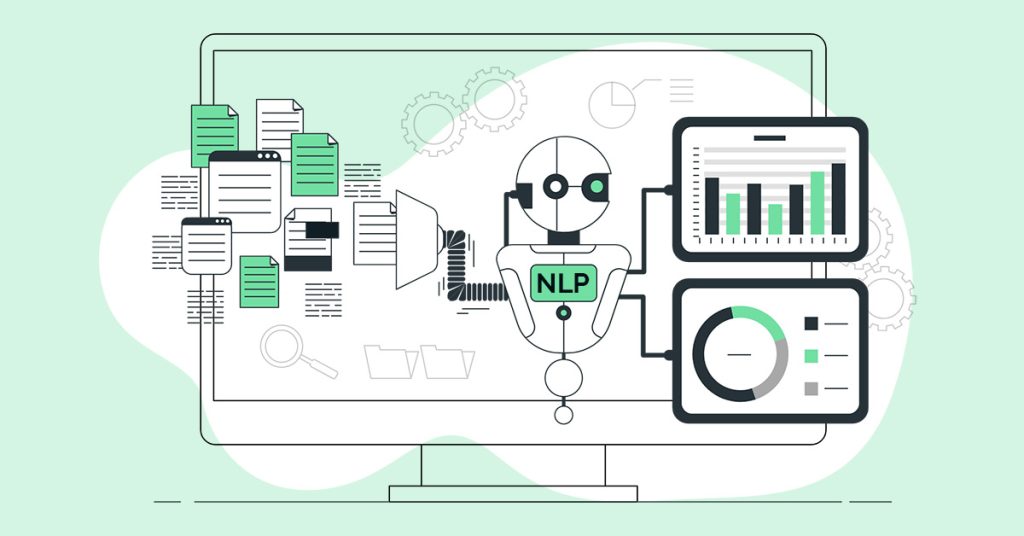- Defining contactless customer service:
- The importance of contactless solutions in th emodern world:
- Challenges faced in traditional customer service models:
- Example of how contactless CX can improve customer service:
- What are chatbots?
- The role of chatbots in contactless customer service:
- Features of chatbot for contactless customer service:
- Real world applications of contactless customer service with chatbots:
- Contactless customer service through Botbuz No Code Chatbot:
- Future of contactless customer service through chatbots:
- Chatbots as part of a larger contactless ecosystem:
Customers today expect a seamless and convenient services, regardless of how they interact with a business. The rise of contactless customer service is one way businesses are meeting this demand. Contactless customer service refers to the use of technology to facilitate interactions between customers and businesses without the need for physical contact. This can include using chatbots, self-service kiosks, and mobile apps.
The Rise of Contactless Customer Service
There are a number of factors driving the rise of contactless customer service. One factor is the COVID-19 pandemic. The pandemic has made customers more aware of the benefits of contactless interactions, such as reducing the risk of infection. Another factor is the increasing popularity of mobile devices. Mobile devices allow customers to access self-service options and reach out to businesses for support on their own terms.
Defining Contactless Customer Service:
Contactless customer service is defined by the following characteristics:
Technology-enabled: Contactless customer service are enabled by technology. It includes chatbots, self-service kiosks & mobile apps.
Frictionless: Contactless customer service are designed to be as frictionless as possible for customers. This means that customers should be able to complete their interactions with businesses quickly & easily. Thus, eliminating the need to wait or provide unnecessary information.
Convenient: Contactless customer service should be convenient for customers. This means that customers should be able to access them from anywhere, at any time, and on any device.
The Importance of Contactless Solutions in the Modern World:
Contactless solutions are becoming important in the modern world for various reasons:
Customer demand: Customers are increasingly demanding contactless experiences. They want to be able to interact with businesses quickly, easily, and securely.
Technology trends: Technological advances are making it easier to implement contactless solutions. For example, the development of mobile wallets and contactless payment terminals. It has made it possible for customers to make payments without having to hand over their physical cards.
Public health concerns: The COVID-19 pandemic has made customers more aware of the benefits of contactless interactions. Contactless interactions can help to reduce the risk of infection.
Challenges Faced in Traditional Customer Service Models
Traditional customer service models often face a number of challenges, including:
Lack of convenience: Customers often have to wait on hold for long periods of time or go through multiple steps to resolve their issues.
Lack of personalization: Customers often feel like they are just a number when they interact with businesses using traditional channels.
Security concerns: Customers may be hesitant to provide their personal information over the phone or through unsecured channels.
Contactless CX can help businesses to overcome these challenges and deliver a better customer experience.
Examples of how contactless CX can improve customer service:
Chatbots: Chatbots can provide 24/7 customer support and answer frequently asked questions.
Self-service kiosks: Self-service kiosks can allow customers to check in for appointments, make payments & print boarding passes.
Mobile apps: Mobile apps can provide customers with access to a variety of features. It can be helpful in order tracking, loyalty programs & customer support.
Contactless payment methods: Contactless payment methods allow customers to pay for goods & services without having to hand over their credit or debit card.
By implementing contactless CX solutions, businesses can create a more convenient, personalized & secure customer experience.
What are Chatbots?
Chatbots are computer programs that are trained to simulate conversation with humans. They can be used to interact with customers through a variety of channels, including websites, mobile apps, and messaging platforms.
Chatbots are powered by artificial intelligence (AI). AI allows chatbots to understand and respond to human language in a natural way. Chatbots can also learn from their interactions with customers and improve their responses over time.
The Role of Chatbots in Contactless Customer Service:
Chatbots are playing a leading role in the development of contactless customer service. Chatbots are computer programs that can simulate conversation with humans. They can be used to answer customer questions, provide support, and complete transactions.
Chatbots enable contactless customer interactions. It provides customers with a way to contact businesses without having to speak to a human agent or visit a physical location. Customers can use chatbots to get help with their questions & problems. It also helps to complete tasks such as booking appointments, purchasing products & making payments.

Features of Chatbots for Contactless Customer Service:
24/7 Availability : Chatbots are available to customers 24 hours a day, 7 days a week. This is essential for contactless customer experience, as customers should be able to interact with businesses at their own convenience, regardless of the time of day or night.
Instant Responses : Chatbots can provide customers with instant responses to their questions and requests. This is important for contactless customer experience, as customers expect a quick and efficient response.
Personalization and Customer Data Utilization : Chatbots can be used to personalize the customer experience by using data analytics to learn about each customer’s preferences and tailor their responses accordingly. This helps to create a more engaging and relevant experience for customers.
Multichannel Support : Chatbots can support multiple channels, such as websites, mobile apps, and social media. This allows customers to interact with businesses on the channel that is most convenient for them.
Real-World Applications of Contactless Customer Service with Chatbots:
Contactless Ordering and Payments in the Restaurant Industry:
Chatbots can enable contactless ordering and payments in restaurants. Customers can use a chatbot to browse the menu, place an order & pay for their meal without having to interact with a human waiter or cashier. This can help to reduce the risk of infection and improve the customer experience.
For example, a restaurant could have a chatbot that customers can access through their mobile device. The chatbot would allow customers to browse the menu, add items to their cart & pay for their meal using a mobile payment app. The restaurant could then deliver the food to the customer’s table or allow them to pick it up at the counter.
Self-Service Check-in and Check-out in Hospitality:
Chatbots can enable self-service check-in & check-out in hotels and other hospitality businesses. Customers can use a chatbot to check in to their room, receive their room key & check out of their room without having to interact with a human front desk agent. This can help to reduce wait times and improve the customer experience.
For example, a hotel could have a chatbot that customers can access through their mobile device. The chatbot would allow customers to provide their reservation details and receive their room key. The customer could then use the room key to access their room and check out at their convenience.
Automated Support in E-commerce:
Chatbots can provide automated support to customers in e-commerce businesses. Customers can use a chatbot to get help with finding products, placing orders, tracking shipments & resolving problems. This can help to reduce the workload on human customer service agents & improve the customer experience.
For example, an e-commerce company could have a chatbot that customers can access through their website or mobile app. The chatbot would be able to answer customer questions, provide product recommendations & help customers with their orders.
Healthcare Appointment Scheduling and Telemedicine:
Chatbots can enable contactless appointment scheduling & telemedicine in healthcare businesses. Customers can use a chatbot to schedule an appointment with a doctor or other healthcare provider. They can also use a chatbot to receive medical advice & treatment through telemedicine. This can help to improve access to healthcare and reduce the risk of infection.
Contactless customer service through Botbuz no code chatbot:
24/7 availability: Botbuz chatbots are available 24 hours a day, 7 days a week, so customers can get help whenever they need it.
Instant responses: Botbuz chatbots can provide instant responses to customer queries, so customers don’t have to wait long for help.
Self-service: Botbuz chatbots can help customers complete self-service tasks, such as tracking orders, troubleshooting problems & getting product information. This can free up human customer service agents to focus on more complex issues.
Personalization: Botbuz chatbots can be personalized to each customer’s needs. This means that customers can get the help they need quickly and easily, without having to go through a lengthy onboarding process.
Multichannel support: Botbuz chatbots can be deployed on multiple channels, such as websites, mobile apps, and social media. This makes it easy for customers to interact with businesses on the channel that is most convenient for them.
For example, a healthcare clinic could have a chatbot that patients can access through their website or mobile app. The chatbot would allow patients to schedule an appointment with a doctor, get medical advice & receive treatment through telemedicine.
How businesses can use Botbuz no code chatbot to provide contactless customer service ?
Contactless ordering and payments: Businesses can use Botbuz to create a chatbot that allows customers to order food, products, or services without having to interact with a human agent. This can be done through a variety of channels, such as the website, mobile app, or social media.
Self-service check-in and check-out: Businesses can use Botbuz to create a chatbot that allows customers to check in and check out of hotels, gyms, and other businesses without having to interact with a human agent. This can help to reduce wait times and improve the customer experience.
Automated support: Businesses can use Botbuz to create a chatbot that provides automated support to customers with questions about products, services, or account issues. This can help to reduce the workload on human customer service agents and improve the customer experience.
Product recommendations: Businesses can use Botbuz to create a chatbot that recommends products or services to customers based on their past purchases or browsing history. This can help customers to find the products or services they are looking for more easily.
Loyalty programs: Businesses can use Botbuz to create a chatbot that helps customers to manage their loyalty program accounts and earn rewards. This can help businesses to keep customers engaged and coming back for more.
The Future of Contactless Customer Service through Chatbots:
Trends in Chatbot Technology
Here are some of the key trends in chatbot technology that are shaping the future of contactless customer experience:
- Natural language processing (NLP): NLP is becoming increasingly sophisticated, allowing chatbots to understand and respond to human language more naturally. This is leading to more engaging and effective chatbot interactions.
- Machine learning (ML): ML is being used to train chatbots to learn from customer interactions and improve their performance over time. This is leading to chatbots that are more accurate, helpful, and proactive.
- Dialogue management: Dialogue management systems are being used to create chatbots that can handle complex customer conversations more effectively. This is leading to chatbots that can provide more comprehensive and personalized support.
- Multimodal interfaces: Chatbots are increasingly being integrated with multimodal interfaces, such as voice, video, and augmented reality (AR). This is making chatbots more accessible and engaging for customers.
Chatbots as Part of a Larger Contactless Ecosystem:
Chatbots are becoming part of a larger contactless ecosystem. It includes other technologies such as self-service kiosks, mobile payments & contactless delivery. This is creating a more seamless and convenient customer experience. For example, a customer could use a chatbot to order food from a restaurant, then use a self-service kiosk to pick up their food, and finally pay with their mobile phone.
Overall, the future of contactless customer experience through chatbots is very promising. Chatbots are becoming more sophisticated, integrated, and accessible, and they are being used to create new and innovative customer experiences. Businesses that embrace chatbot technology are well-positioned to succeed in the contactless economy.
Chatbots are playing a leading role in the contactless customer experience revolution. By providing businesses with a way to provide customers with a seamless, convenient, and safe customer experience without having to interact with human agents, chatbots are helping businesses to stay ahead of the curve in the contactless economy.
Botbuz no code chatbot is a powerful tool that businesses can use to implement chatbots quickly and easily. With Botbuz, businesses can create and deploy chatbots without any coding experience. This makes it possible for businesses of all sizes to benefit from the power of chatbots to improve their customer experience.




